Damp-Heat
The information provided here is not a replacement for a doctor. You shouldn't use it for the purpose of self-diagnosing or self-medicating but rather so you can have a more informed discussion with a professional TCM practitioner.
At a glance
Preliminary reading: What is a pattern? The concept of Dampness The concept of Heat
Key attributes
Chinese name: 湿热 Pinyin name: Shī Rè
Pattern nature: Full
Pattern hierarchy: General pattern with specific forms like Damp-Heat in the Liver or Damp-Heat invading the Spleen
Causes
Common causes: 1. External pathogenic factor, 2. Diet, 3. Emotional stress
Diagnosis
Common symptoms: Acne Fever Hot body Headaches No thirst and five other symptoms
Pulse type(s): Soggy (Ru)
Tongue description: Red tongue with white sticky coating
Treatment
Treatment principle: Clear Dampness and Heat
Common formulas: Huo Xiang Zheng Qi San Lian Po Yin Yin Chen Hao Tang and one other formulas
Pathology
Within the Four-Levels theory, Damp-Heat is the first level of invasion of External Pathogens, when it still resides in the body's Exterior.
The general symptoms of Damp-Heat are the heaviness of the body and head as well as low temperature fever rising in the afternoon. The patients are not hot on the first touch, but the skin gets hot after a while if one leaves the hand on the body. Sweating doesn't alleviate the condition, contrary to some other externally-contracted diseases.
Other symptoms vary depending on which parts of the body the Damp-Heat invades and settles down. If it is Damp-Heat invading the Stomach or the Spleen, then the patients experience symptoms like Stomach fullness, nausea, lose of appetite, loose stools or scanty urination.
If the Damp-Heat invades the Liver and the Gallbladder, the typical manifestations are Cramps in the Liver area, bitter taste in the mouth, fever or aversion to cold.
When the Damp-Heat is in the Bladder, it causes frequent, urgent and burning urination, fever, dry stools, as well as abdominal distension. There may also be blood and stones in the very dark urine.
When it invades the Large Intestine, it gives rise to diarrhea, bloody stools, burning anus and thirst.
Finally, if the Damp-Heat is in the Channels or joints, it causes joints pain, stiffness and swollen, aversion to cold, thirst and hot body.
The treatment method of this pattern also varies. If the Dampness manifestations are more strong than the Heat, the priority is to expel Dampness. It is recommended to use formula such as San Ren Tang or Ping Wei San. If the Heat predominates, it is better to use Lian Po Yin, Yin Chen Hao Tang and Ge Geng Huang Qin Huang Lian Tang.
Causes
External pathogenic factor: When a patient's Defensive Qi is weak, external Dampness and Heat, two of the so-called "Six Evils", can penetrates the body and settle down.
Diet : Over consumption of fat foods as well as alcohol, irregular eating time or just overeating itself can largely disturb the Spleen and Stomach's digestion function. As a result, foods and Body Fluids get stagnated and accumulated to Heat and Dampness.
Emotional stress : The Liver ensures the smooth flow of Qi throughout the body, in all Organs and in all directions. Prolonged emotional stress such as worry can largely harm this Liver functions. As a result, the Spleen and the Stomach's digestion foods and water function is largely impaired as well, hence the Heat and Dampness.
Diagnosing Damp-Heat
Diagnosing a pattern in Chinese Medicine is no easy feat and should be left to professional practitioners. In particular one has to know how to differentiate between different types of pulses and tongue coatings, shapes and colors as well as learn to read from a long list of seemingly unrelated symptoms.
Pulse type(s): Soggy (Ru)
Tongue description: Red tongue with white sticky coating
Main symptoms: Acne Fever Hot body Headaches No thirst Swollen neck glands Feeling of heaviness Sticky taste in the mouth Bitter taste in the mouth Stifling sensation in the chest and epigastrium
Diagnosis commentary: The key characteristic symptoms of this pattern are the feeling of heaviness on the head and the body, chest oppression as well as scanty yellow urination.
Treating Damp-Heat
Treatment principle
Clear Dampness and Heat
Herbal formulas used to treat Damp-Heat

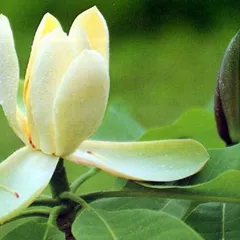
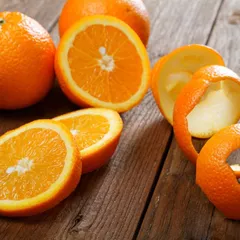
The top herbs in Huo Xiang Zheng Qi San are Korean Mint (Huo Xiang), Houpu Magnolia Bark (Hou Pu) and Tangerine Peel (Chen Pi)
Huo Xiang Zheng Qi San
Source date: 1107 AD
Number of ingredients: 11 herbs
Key actions: Releases the Exterior. Transforms Dampness. Regulates Qi. Harmonizes the Middle Burner.
Formula summary
Huo Xiang Zheng Qi San is a 11-ingredient Chinese Medicine formula. Invented in 1107 AD, it belongs to the category of formulas that transform Dampness and harmonize Stomach.
Besides Damp-Heat, Huo Xiang Zheng Qi San is also used to treat Cold invading the Stomach or Rebellious Stomach Qi.
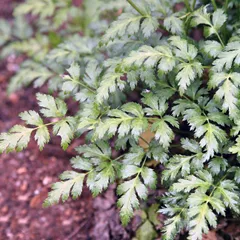

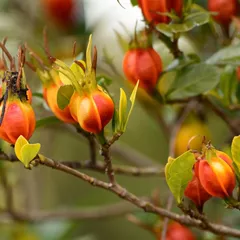
The top herbs in Lian Po Yin are Goldthread Rhizomes (Huang Lian), Houpu Magnolia Bark (Hou Pu) and Cape Jasmine Fruits (Zhi Zi)
Lian Po Yin
Source date: 1862 AD
Number of ingredients: 7 herbs
Key actions: Clears Heat. Transforms Dampness. Regulates Qi. Harmonizes the Middle Burner.
Formula summary
Lian Po Yin is a 7-ingredient Chinese Medicine formula. Invented in 1862 AD, it belongs to the category of formulas that clear Heat and expel dampness.
Besides Damp-Heat, Lian Po Yin is also used to treat Damp-Heat invading the Spleen or Damp-Heat in the Stomach.
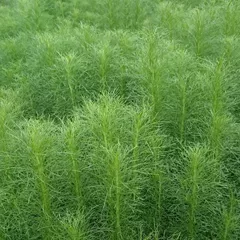

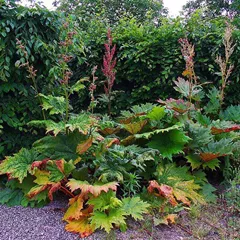
The top herbs in Yin Chen Hao Tang are Virgate Wormwood (Yin Chen), Cape Jasmine Fruits (Zhi Zi) and Rhubarb (Da Huang)
Yin Chen Hao Tang
Source date: 220 AD
Number of ingredients: 3 herbs
Key actions: Clears heat. Resolves dampness. Reduces jaundice.
Formula summary
Yin Chen Hao Tang is a 3-ingredient Chinese Medicine formula. Invented in 220 AD, it belongs to the category of formulas that clear Heat and expel dampness.
Besides Damp-Heat, Yin Chen Hao Tang is also used to treat Damp-Heat in the Liver or Damp-Heat in the Gallbladder.

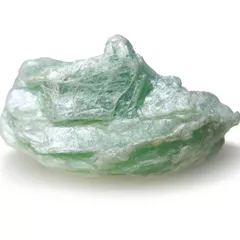

The top herbs in Gan Lu Xiao Du Dan are Baikal Skullcap Roots (Huang Qin), Talc (Hua Shi) and Virgate Wormwood (Yin Chen)
Gan Lu Xiao Du Dan
Source date: 1831 AD
Number of ingredients: 11 herbs
Key actions: Resolves Dampness and transforms turbidity. Clears Heat and resolves Toxicity .
Formula summary
Gan Lu Xiao Du Dan is a 11-ingredient Chinese Medicine formula. Invented in 1831 AD, it belongs to the category of formulas that clear Heat and expel dampness.
Besides Damp-Heat, Gan Lu Xiao Du Dan is also used to treat Toxic-Heat.
Diet recommendations
Avoiding overeating and any hot foods such as alcohol, dessert, sweat drink or juices. Avoiding smoking. It is recommended to take the foods such as green bean, winter melon, loofah, water melon or green tea.
Special highlight: the link between menstrual cramps and Damp-Heat
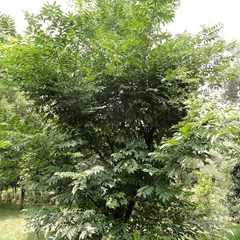
Phellodendron Bark (Huang Bo) is the key herb for Er Miao San, a formula used for menstrual cramps caused by Damp-Heat
Typical symptoms for menstrual cramps caused by Damp-Heat: Fever Thirst Dry mouth Restlessness Heavy periods Feeling of heat Sore lower back Abdominal fullness Abdominal tightness Sore and weak limbs Lower abdominal pain Feeling of heaviness Thick menstrual blood Scanty and dark urine Feeling of bearing down Purplish menstrual blood Smelly Vaginal discharge Bitter taste in the mouth Small clots in menstrual blood
Recommended herbal formulas: Er Miao San, Xiao Yao San, Qing Re Tiao Xue Tang
When Damp-Heat causes menstrual cramps a feeling of lower abdominal tightness, distention, and cramps appears and gets stronger when the period is about to start. The discomfort lasts until the middle of the periods. The menstrual flow is often heavy and the blood is purplish in color and thick in texture. Other typical symptom can be an excessive smelly yellow vaginal discharge outside of menstruation times.
When patients have a history of pelvic inflammatory disease, chronic vaginitis,...Read more about menstrual cramps
Special highlight: the link between intermenstrual bleeding and Damp-Heat
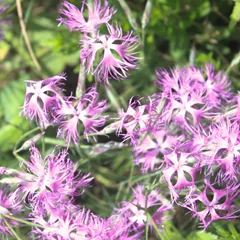
Chinese Pink Herbs (Qu Mai) is the key herb for Ba Zheng San, a formula used for intermenstrual bleeding caused by Damp-Heat
Typical symptoms for intermenstrual bleeding caused by Damp-Heat: Fatigue Joint pain Poor appetite Chest pressure Vaginal discharge Scanty and dark urine
Recommended herbal formula: Ba Zheng San
Mid-cycle bleeding under this pattern can be recognized by the sticky texture of the blood, without clots. Blood volume can be scanty or heavy.
The Spleen is the main Organ involved. When the Spleen is weak, it fails to perform properly its function of transforming and transporting Body Fluids. Therefore Dampness accumulates and it also create Heat or Fire. The Damp Heat not only harms the Directing and Penetrating Vessels but also provokes the Blood and cause bleeding during mid-cycle. The Read more about intermenstrual bleeding
Consequence patterns
Damp-Heat in Stomach and Spleen
If left untreated Damp-Heat can lead to Damp-Heat in Stomach and Spleen
